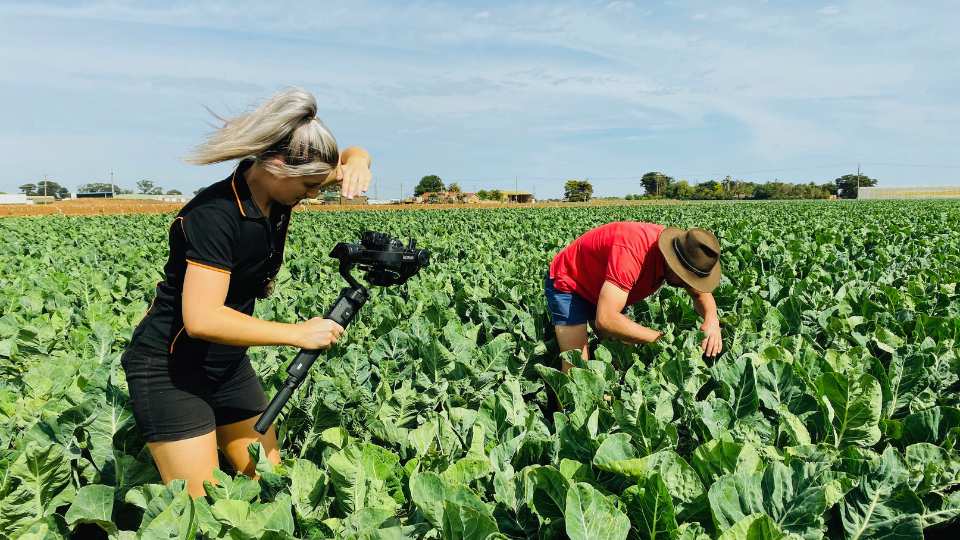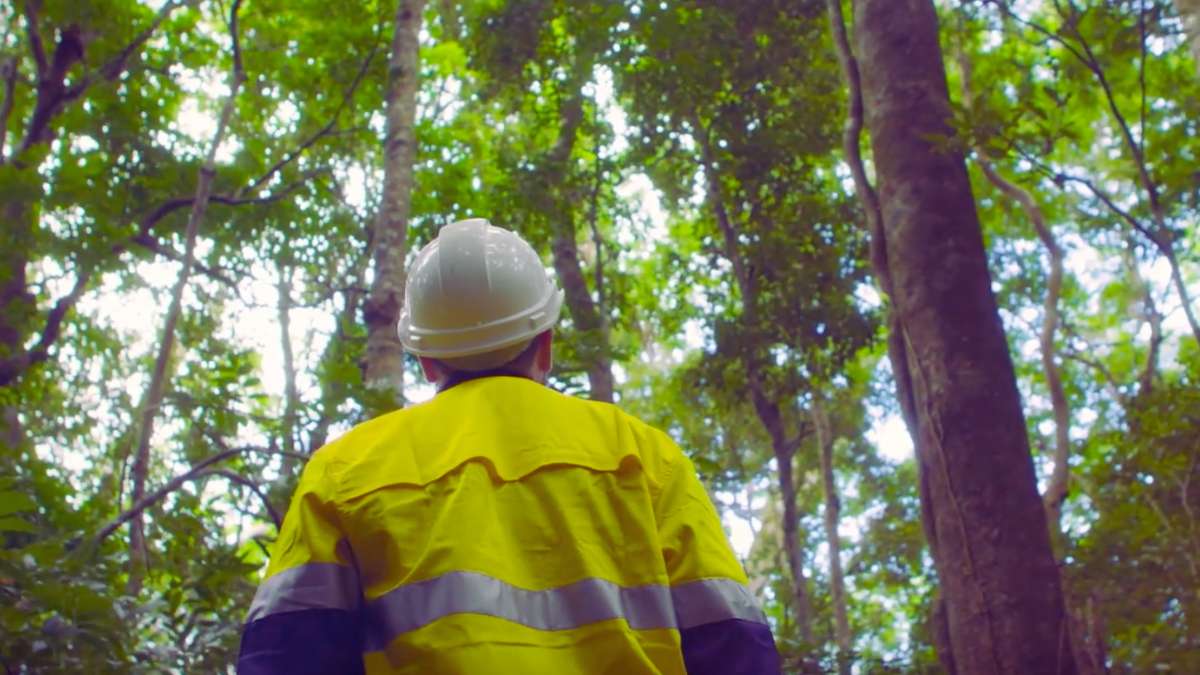Mastering video length & pacing to keep viewers watching
Setting the scene

Everyone bangs on about video length. And it’s important.
But so is video pacing.
Together, these elements determine how effectively a corporate video communicates its message and retains viewer interest.
They need to be carefully balanced.
And this balance is based on the target audience, the objectives of the video and where the video will be played.
In this beginner’s guide, you’ll discover:
- The ideal video lengths for maximum audience retention – and short isn’t always the right answer
- How music can keep you emotionally connected
- The engaging video pacing techniques we use in our client videos
- Strategies to boost viewer engagement
Jump in to learn how we make your videos more watchable!
Mastering video length for maximum audience retention
To make the most of every moment in your videos, you need to:
- Understand your audience’s attention span and viewing preferences
- Find the optimal video length based on the content type and purpose
- Continuously test and iterate to maximise viewer engagement
Understanding your audience’s attention span
Knowing your target audience is crucial when determining the ideal video length.
Different demographics have varying preferences and attention spans, directly influencing how they consume video content.
- A professional audience might engage longer if the content is relevant to them
- Younger viewers might prefer shorter, snackable videos
- If your audience is a captive audience, like employees watching a training video, you can go longer
- But if you’re trying to flag attention on a crowded social platform, you’ll need to start short – and then coax viewers to your own platform for longer form content.
Analyse your target audience’s viewing habits
To understand your audience’s attention span, analyse their viewing habits and preferences.
If you’ve created videos before, use analytics tools like Google Analytics, Vimeo Analytics, YouTube Analytics, or Facebook Insights to examine the performance metrics of your past content.
These platforms provide detailed insights into viewer demographics, engagement rates, and watch times, giving you valuable insight into how long your viewers will watch your content.
When creating a video for the first time, you can explore existing data:
Look at similar content within your industry or niche. Platforms like YouTube provide analytics on viewer demographics, watch time and engagement rates. Analyse successful videos targeting a similar audience to understand what works.
Use social media insights: Social media platforms offer valuable insights into what your audience engages with. Check the performance of different types of videos, looking at metrics like shares, comments, and view duration.

Finding the sweet spot for different video types
The optimal video length varies depending on the type of content you’re creating.
Short-form, mid-length, and long-form videos each have their sweet spot for maximising audience retention.
Short-form videos (under 2 minutes)
Short-form videos are perfect for quick, engaging content that grabs attention and delivers a clear message. These videos work well on social media platforms like LinkedIn, Facebook, TikTok, Instagram, and Twitter, where users scroll through feeds and have limited attention spans.
Examples of short-form videos include:
- Teasers and previews
- Quick tips and hacks
- Snackable educational content
Mid-length videos (2-10 minutes)
Mid-length videos are ideal for more in-depth content- and this is where most video productions for our clients land.
This length is enough time to dive into a topic.
Examples of mid-length videos include:
- Marketing videos
- Corporate brand videos
- Recruitment videos
- Induction and training videos
- Case study videos
- Interview based videos
Long-form videos (over 10 minutes)
Long-form videos are suitable for in-depth storytelling to fully explore a topic and provide valuable insights to your audience.
Examples of long-form videos include:
- Induction and training videos
- Detailed case studies

Testing and adjusting to optimise video length
Finding the ideal video length is an ongoing process that requires testing and adjusting.
You’ll learn what works best for your audience each time you create a video.
By monitoring audience retention metrics and experimenting with different video lengths, you can continually refine your strategy to maximise viewer engagement.
Monitor audience retention metrics
Pay close attention to audience retention metrics, such as average view duration and completion rates.
Identify drop-off points where viewers tend to disengage from your videos.
This information will help you determine if your videos need to be shorter or if there are specific sections that need improvement.
Video pacing keeps viewers watching longer
- Master the art of video pacing to captivate your audience
- Discover techniques to create dynamic and engaging videos
- Learn to balance information delivery and entertainment for maximum impact
The role of pacing in video storytelling
Pacing plays a crucial role in video storytelling, determining the rhythm and flow of your content.
It’s how we bring back viewers’ attention before they become bored.
By controlling the speed and tempo of your video, you can guide viewers through the video and keep them engaged from start to finish.
Pacing also plays a significant role in conveying emotions and building suspense.
By strategically varying the speed and intensity of your video, you can create a sense of excitement, anticipation, or even relaxation.
For example, fast-paced, high-energy segments can generate enthusiasm and keep viewers on the edge of their seats, while slower, more measured sections allow for reflection and information processing.
By controlling the flow of your video, you can emphasise key points, provide necessary context, and ensure your audience has time to absorb the content before moving on to the next topic.

Techniques for video pacing
The first – and most potent – technique leverages our emotional attachment to music.
Using music to set the pace
Music inherently carries emotional weight and influences how your viewer reacts, so we use the highs and lows of music to enhance the emotional flow of your video.
It might be where the voiceover or interview pauses – and the music LIFTS for a few seconds to catch the ear and bring your viewer back to attention.
For a longer video, we break up sections with different music tracks – often with a change in pace for each track. [And that precious music lift in the transition from one track to the next.]
A music montage – with nothing but vision and music – is a crescendo of sound, where the music is the hero, with the audience carried along for the ride.
By aligning the high points of your music with critical moments in the video, we create impactful moments that capture attention.
Conversely, softer, slower music allows the audience to absorb information or appreciate a moment of reflection.

Varying scene lengths
Like a good chat with ups and downs, varying the length of your scenes keeps your video conversationally engaging.
Quick cuts for energy – when the moment calls for excitement or urgency, we switch up the scene lengths to be shorter. This rapid pace keeps the energy high and your viewers on their toes.
Longer takes for depth – on the flip side, we extend the scene length when we need to dive deeper or let a moment truly sink in. This slower pace allows viewers to absorb more detail and connect emotionally with the content. [Slow motion is great for this.]
Mixing it up – keeping the scene lengths varied throughout the video prevents monotony. It’s like adding spice to a conversation; it keeps it engaging.
By carefully balancing the quick energy bursts with slower, more thoughtful segments, we create a rhythm that keeps the viewer engaged from start to finish.

Transitions
A different type of transition signals a change in section.
A special effect into the next scene can propel the narrative forward quickly.
A slow dissolve or fade to black might be used to give the viewer a pause.

Text overlays and captions
Text overlays and captions highlight key points and ensure your message is accessible to all viewers.
Highlighting key points – adding text overlays at crucial moments reinforces the main ideas and ensures they stick with the viewer.
It’s like underlining important passages in a book, ensuring they don’t go unnoticed.
Accessibility and engagement – captions make your video accessible to a broader audience, including those who are deaf or hard of hearing.
They also help in noisy environments where audio might be hard to hear or when your viewer has audio turned off.
Styling for impact – the design and placement of text overlays and captions can add to the visual appeal.
Using your brand’s fonts and colours keeps the video consistent with your brand identity while adding a professional touch

Graphics and animation
Graphics and animation are vital elements in making complex information more digestible.
Enhancing storytelling – animations can illustrate points that are difficult to capture with live footage.
Think of animated charts, graphs, or infographics that break down data in a visually engaging way. They simplify complex concepts and keep the viewer engaged.
Adding visual interest – even simple animations like lower-thirds for names and titles or animated transitions between sections can add polish to your video.
They guide the viewer’s eye and make the content more dynamic and appealing.
Highlighting key messages – motion graphics can draw attention to important points.
An animated text or icon that appears on screen at the right moment can underscore a message and ensure it resonates with the audience.

Dynamic content sequencing
While your primary goal may be to educate your audience, you also want to keep them interested and motivated to watch until the end.
One way to achieve this balance is by alternating between fast-paced, high-energy segments and slower, more informative sections.
In a recent welcome induction series of five videos we created for a client, each video had a medium-paced narrated section, followed by a music lift into a fast-paced montage of scenes cut to the beat.
This build-and-release technique helped maintain viewer engagement throughout the video.
It was easy – and enjoyable – to keep watching the videos all the way through.

Balancing information delivery and entertainment
Use pacing to emphasise key points and allow viewers to process information.
When introducing complex concepts or important details, slow down the pace and give your audience time to absorb the content.
You can achieve this through longer shots, slower music, or even moments of silence.
On the other hand, when you want to generate excitement or highlight a particular point, speed up the pace with shorter shots, quick cuts, and energetic music.
Finally, ensure that your video’s pacing aligns with its overall tone and purpose.
If you’re creating an educational video, your pacing should be measured, allowing for adequate information delivery.
If you’re producing a promotional video, your pacing may be faster and more energetic to generate enthusiasm and encourage action.
By tailoring your pacing to your video’s specific goals, you can create a more effective and engaging viewing experience for your audience.
Nailing your video’s first and last impressions
- Use compelling introductions to grab viewers’ attention
- Optimise video endings with clear takeaways and calls to action
Compelling hooks and introductions
If you don’t have a captive audience, don’t waste your video’s first 5-10 seconds on your logo.
There’s nothing in your logo that will invite your flighty viewer to keep watching.
Better to start with a statement or question they relate to or an intriguing visual that immediately catches their interest.
It doesn’t have to be ‘clever’. It just needs to be relatable.
The key is to quickly communicate the value proposition of your content and give viewers a reason to keep watching.
Examples of effective video hooks
“How much can you save with smarter mining technology? Let’s dig into the numbers.”
“What does sustainable meat production look like?”
“With pressures for more efficiency and accuracy in the lab, the Ready-To-Use antibody speeds up workflows and reduces errors…”
“This more than 100-year resource delivers a steady supply for uninterrupted production…and long-term availability to keep your processes running smoothly.”

Optimising video endings to encourage the next action
The final seconds of your video are just as crucial as the opening when it comes to audience retention.
This is where you reinforce key takeaways, encourage viewers to take action, and leave them eager to know more.
Start by providing a clear, concise summary of the main points covered in your video.
Then, include a strong call-to-action that guides viewers to take the next step, whether sending them to a landing page, showing them how to get in touch, subscribing to your channel, liking the video, or watching related content.
You can boost audience retention and watch time by crafting compelling hooks, maintaining engagement throughout the video, and optimising your endings.
The science behind video length and attention span
The relationship between video length and attention span is a fascinating interplay between our brain’s natural tendencies and the design choices of video platforms.
Here’s a breakdown of the science at play:
Attention span: shifting sands
There’s a popular notion that attention spans have shrunk dramatically due to technology.
Research on this is ongoing, with some studies suggesting a decline in sustained focus for complex tasks, while others highlight the influence of content type and individual differences.
What’s more apparent is that we’re constantly bombarded with stimuli. Platforms like YouTube and TikTok are designed to keep you scrolling with autoplay and endless feeds.
This can lead to shorter attention spans on these specific platforms.

Finding the sweet spot
The optimal video length depends on the content and audience.
Educational videos might benefit from a structure that builds focus over time, while product demos might be most effective in shorter formats.
Studies haven’t identified a magic “attention span” number but suggest different content types have different engagement curves.
So, it returns to using engagement techniques to combat shrinking attention spans.
Using storytelling techniques, interactive elements, and concise content can help maintain viewer focus and promote better information retention, regardless of video length.

Cognitive load and information processing
Cognitive load refers to the mental effort required to process and retain information.
A video presenting too much information too quickly can overwhelm the viewer and lead to disengagement.
To maintain viewer attention, it’s essential to balance the amount of information presented with the pace at which it is delivered.
Wrapping it all up: Mastering video length and pacing
Whether branding, marketing, recruiting or training, balancing video length with pacing is critical to creating content that keeps your viewers glued to the screen.
Here’s a quick recap:
- Know your audience’s attention span.
- Music highs and lows catch grab emotional attention.
- Changing pace from slow scenes to fast cuts keeps viewers engaged.
- Transitions break up sections to maintain visual interest.
- Text overlays and captions strengthen retention.
- Graphics and animation simplify your message and enhance understanding.
Recognise the psychological factors at play.
Emotions, visual and auditory cues, and manageable information loads keep viewers hooked. Storytelling, interactive elements, and clear, concise content help maintain focus.
There’s no one-size-fits-all.
But when you understand how to work with video length, pacing, and audience engagement strategies, you can create videos that hold attention for longer.
Video on your radar?






